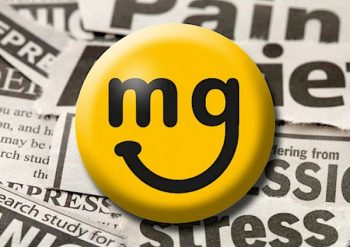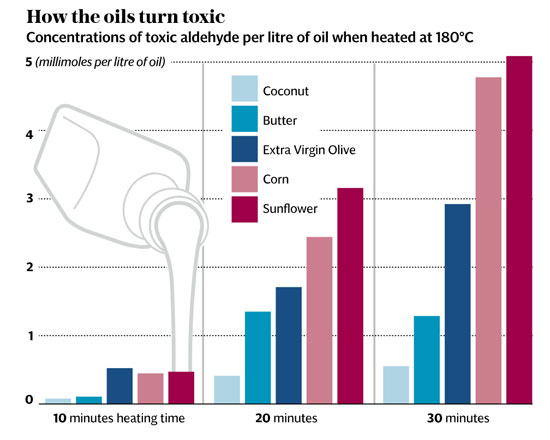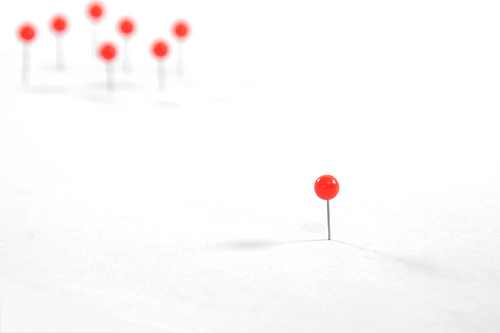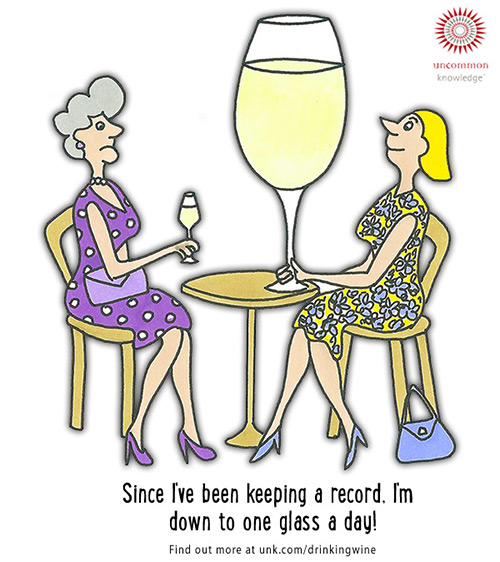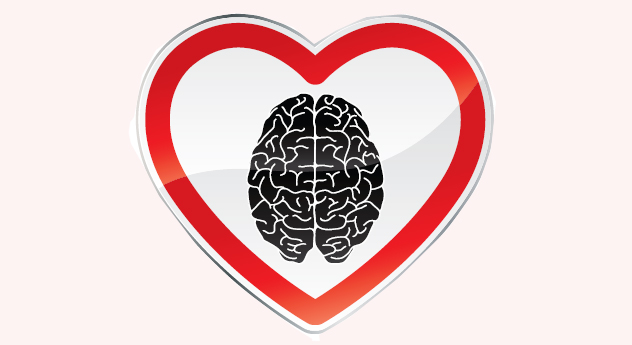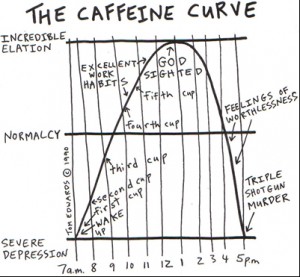It’s time to get my high blood pressure under control, again.
Again, because I’ve fallen off the blood pressure wagon after a two-year whirlwind of getting married, buying a house, relocating, starting a business and having a child. My schedules have changed and its time to rework good health routines into my new life.
Again, because I’ve done this before, know what to do and that my ‘program’ works.
Hypertension runs in my family. My grandfather and mother have had strokes and my uncle had an aneurysm two years ago. My BP is too high and medication is the only alternative if I don’t control it myself. So far, I’m the only family member who’s been able to control it without using drugs. I hope this article changes that.
Essential vs. Secondary
I have essential or general hypertension. That’s what this article is about. Essential hypertension is a primary condition caused by how my body functions and, to a large extent, the result of my habits, good or bad.
Secondary hypertension is when some other disease is causing your hypertension. In other words, you might not even have high blood pressure if it wasn’t for this disease. It could be type-2 diabetes, kidney disease, cirrhosis of the liver, Cushing’s disease, sleep apnea and a rare tumor known as a pheochromocytoma.
Most people with high blood pressure have what I have: essential hypertension.
Natural Method is Mandatory
The side effects of Blood Pressure meds are a disaster! . . .
Impotence, insomnia, extreme fatigue, shortness of breath, dizziness, flu-like symptoms, arrhythmia, severe depression progressing to catatonia, disorientation, memory loss, liver failure, esophagitis, fatal angioedema and even agranulocytosis, another potentially fatal disorder.
They’re so bad that over 40% of the patients that are put on the BP Meds stop taking them! Since the meds lower your blood pressure without addressing any of the root causes those patients are now much worse off than when they started. And, what happens when you stop taking them? Your BP skyrocketts and have have a stroke!
No joke, that’s what happened to my mom when she stopped taking her BP meds. She had two strokes. When I asked her why she stopped taking them she said, “I felt alright and didn’t want to take them anymore”. It took three months before she could speak in order to even tell me that.
The side effects of BP meds may even cause high blood pressure. I feel my BP rising just reading the list. However, the real problem with the BP meds is that they don’t address the root causes of the condition.
Treat or Cure
Eating is the cure for starvation, not the treatment for it.
Likewise, using natural methods for controlling hypertension is the only way to address the root causes of the condition. All together they may even qualify for the lofty ‘C’ word: Cure.
My experience has been that the regimen for normalizing my blood pressure is something I should be doing anyway regardless of any medical condition.
My Approach – Past and Present
The previous approach was not easy, but, it worked. I used a combination of:
- Weight Loss
- Diet
- Exercise
- Food Avoidance
- Dr. Atkins recommended Nutrients
This time around I’m going to take another look at the consensus for the root cause of hypertension. I want to take advantage of the latest medical information out there and work some of the suggestions into my program.
I’ll be using an issue of The Blaylock Wellness Report entitled “Eliminate Hypertension Forever!” I subscribed to these reports just for this issue on Blood Pressure. It has some interesting new theories on the root cause and new recommendations on addressing them.
My previous program works. However, a better understanding of the root cause and the latest thinking on treatment may improve my lifetime plan by: 1) More directly addressing the root cause of the condition, and, 2) Making it easier to stay on the plan through the ups and downs of life.
Doctors Know Natural is the Best Way
Doctors know the best way control a patients high blood pressure is through the patients own natural efforts. They also know that patient success rates are low. A good doctor might tell their patients that its possible to influence their own hypertension by losing weight, eating healthier, etc. However, the doctors can’t wait long before prescribing drugs to a hypertensive patient because the condition is a silent killer.
In other words, doctors need to do whatever it takes to get the numbers down. If you can’t or won’t do it yourself, then get ready for your meds.
I agree with their approach. I also know that I can lower my own high blood pressure without taking drugs.
The routines, diet and nutrients that address the root causes of high blood pressure yield enormous benefits for your overall health. In fact, even if you don’t have hypertension anyone would benefit from them.
Theories on Root Cause
Doctors know more about the treatment for Hypertension than the do about the cause. That means I have to sift through the various theories on root cause if I’m going to improve on my previous program. I’m going to focus on two doctors: Dr. Atkins and Dr. Blaylock.
I trust Dr. Atkins because I followed his recommendations and successfully normalized my blood pressure for years using his methods. I trust Dr. Blaylock because his recommendations build on the foundation and conclusions of Dr. Atkins.
Its helpful to read their individual recommendations separately. I’ll paraphrase each doctors root cause theories and recommendations. Then I’ll put their recommendations together and build my own new program.
Dr. Atkins’ Vita-Nutrient Solution
In a book of the same title Dr. Atkins is specific about how he’s successfully treated hypertension without the use of drugs. I followed his recommendations to the letter and was able to successfully normalize my blood pressure. Dr. Atkins says:
“While scientists debate what actually causes hypertension, one thing is clear: it is very responsive to nutrient and diet therapy. At the Atkins Center we routinely see blood pressure return to normal when the Atkins diet is used along with the right nutrients. A low-carbohydrate diet is important, because this helps bring down the elevated insulin response that appears to be one of the major causes of hypertension. To that we add the following nutrients:” (Listed Below).
Atkin’s Root Causes
- Hyperinsulinemia and insulin resistance (Blood Sugar Stability) – Dr. Atkins says, “Why ban the salt shaker when 60 percent of all hypertension cases are a consequence of insulin resistance. A rich chromium content and low carb foods would be better. The repeated rise and fall of blood sugar apparently stimulates the body’s sympathetic nervous system, which helps regulate blood pressure.”
- Lack of the nutrients in the body that control BP – Although Dr. Atkins does not put it this way its implied by the nutrients he recommends.
Summary of Dr. Atkins Recommendations
- Low Carb Diet to Stabalize Blood Sugar and Insulin Levels
- The Nutrient Program (Below)
Dr. Atkins doesn’t comment on every nutrient he recommends. His total nutritional regimen starts with a broad based Vitimin and Mineral complex (And possibly a superfood type supplement) with the following specific nutrients for hypertension:
Most Important
- Taurine 1,500-3,000 mg
- Magnesium 500-1,000 mg
- Hawthorn 240-480 mg
- Potassium aspartate 400-800 mg
- Vitamin B6 100-200 mg
- Essential oils formula 3,600-7,200 mg
- Garlic 2,400-3,200 mg
- CoQ10 100-200 mg
- Carnitine 500-1,000 mg
- Chromium 300-600 mcg
Moderately Important
- Vitamin C 1-3 grams
- N-acetyl cysteine 1-2 grams
- GABA 2,000-4,000 mg
- Arginine 2-5 grams
- Inositol 500-1,500 mg
- Kava 100-200 mg
- Reishi extract 2-4 capsules
- Choline 1,000-1,500 rng
- Calcium 750-1,500 mg
Specific comments on the above nutrients by Dr. Atkins:
Taurine – An amino acid that promotes fluid excretion by restoring a natural balance between potassium and sodium, the minerals that govern how much fluid our tissues retain. Regulates water retention.
Vitamin D – Shown to lower BP.
Calcium/Magnesium Balance – Although Dr. Atkins thinks Magnesium is the more important of the two.
Magnesium – Addresses all of the primary causes of excess insulin in the blood, low potassium levels, constricted blood vessels.
Sodium/Potassium Balance – Atkins thinks the sodium side of the equation is overemphasized and that potassium is more important to regulating blood pressure. A low sodium diet only cut readings by a few points. But, a high potassium diet, combined with a sugar-free diet, magnesium and taurine are very effective. Apparently there is a high-potassium high-magnesium salt substitute that may be useful. The longer potassium is used the less effective an anti-hypertensive agent it becomes. Diuretics cause loss of potassium and magnesium and weaning patients off these diuretics was a major goal for Dr. Atkins. The diuretics also cause the body to make an increased amount of its normal blood pressure-raising biochemicals.
CoQ10 – The BP lowering effects of taking 60-100mg per day of CoQ10 only is so significant that Dr. Atkins found that 85% of his patients could end their reliance on hypertension medications. The effects are so significant that he cautioned patients with low blood pressure against taking CoQ10 in case it would lower the BP too much.
Vitamin A – Allows the body to use insulin more efficiently, helping the hormone to get blood sugar into the body’s cells (And thereby helping to beat insulin resistance.)
DHA/EPA Levels – 4 grams of fish oils per day have been quite successful in lowering blood pressure. Taken alone they may not lower BP enough. But, combined with Magnesium, potassium, CoQ10 and taurine within a context of a sugarless diet will avoid the need for drugs more than 80 percent of the time.
Dr. Blaylock’s “Eliminate Hypertension Forever!”
While Blaylock’s theories on causes have a lot in common with Dr. Atkins he has several new theories and recommended dietary changes and nutrients that go along with them. As with Dr. Atkins I am only paraphrasing a long and thorough report. I highly recommend anyone with hypertension read Dr. Blaylocks full report and Dr. Atkins book. Both doctors have excellent advice on most of the elements of longevity, quality of life and other ailments along with natural ways to address them.
Lower Than You Think
Dr. Blaylock says hypertension starts at 120/80. Depending on the risk factor studied the negative effects of the condition rise rapidly after this point. Therefore, you should not take comfort if your blood pressure is only, say 130 over 85. Any reading over 120/80 is a serious issue and needs to be addressed. This strict definition puts 25% of the US as having the condition and 50% at some risk for some sort of blood pressure problem.
Blaylocks Root Causes
Dr. Blaylock describes hypertension as one of three symptoms of something called metabolic syndrome. The other two are type-2 diabetes and abnormalities in blood lipids. Without delving into these other (Related) conditions I would summarize Dr. Blaylocks root causes of Hypertension as:
- Excess Insulin – Caused be eating too much sugar, ingesting excitotoxins (MSG, Aspartame, other food additves). Also caused by insulin resistance. Excess insulin causes inflammation and generates huge quantities of free radicals and lipid peroxidation products.
- Free Radicals – Caused by eating the wrong foods, not having the vitamins in your body to cleanse them and especially having too much iron in the blood. Free radicals damage the brain stem and the cells
lining the arteries (endothelial cells) through a process called Lipid peroxidation whereby the free radicals steal electrons from the lipids in cell membranes. Apparently, this damage itself produces more free radicals. The damage to the arteries decreases the control the elasticity of the
artery. The damage to the brain stem affects nuerons that may be responsible for some kind of primary BP control.
- Inflammation – A natural immune system response, but, can be triggered by excess insulin. Chronic inflammation seriously inhibits BP control.
- “Beer Gut” – The fat underneach the muscles of your stomach (Visceral fat) and not the fat underneath your skin (Subcutaneous). Excess visceral fat secretes immune chemicals (adipokines or cytokenes) that cause insulin resistance which leads to excess insulin. The link is so strong that surgical removal of belly fat has
been shown to cure hypertension in
62% of people.
- Bad Diet – Too much sugar intake, too much caffeine and alcohol, not enough of foods containing the right nutrients for BP control.
- Lack of the nutrients in the body that control BP – Once again, although Dr. Blaylock does not put it this way its implied by the nutrients he recommends.
Summary of Dr. Blaylock’s Recommendations
- Stabalize Blood Sugar by elimintating Sugar and excitotoxins from the Diet.
- Control Free Radicals by Getting Rid of Excess Iron in the Blood and other means.
- Cut back on Caffeine and Alcohol.
- Exercise to Get Rid of Belly Fat.
- Add the Following Nutrients to Dr. Atkins Recommended Nutrients
- Flavoniods (quercetin / hesperidin)
- Aged Garlic, in particular
- Alpha Lipoic acid (R-lipoic acid)
- Ginko biloba
- Green tea extract (The benefits of Green Tea without the caffeine)
Iron and Hypertension Are Linked
As luck would have it my yearly checkup was scheduled on Day 3. I showed the doctor my article and we discussed the whole program. Because I have hemachromatosis it was also important to talk about how iron in the blood may affect hypertension. While writing the main article for this new blood pressure program I ran accross research that described the link between the two conditions. And the doctor confirmed it.
Excess iron in the blood causes free radicals which are one of the root causes of hypertension. Blaylock says that even an iron level on the high side of normal can significantly raise blood pressure.
Free Radicals – Caused by eating the wrong foods, not having the vitamins in your body to cleanse them and especially having too much iron in the blood. Free radicals damage the brain stem and the cells lining the arteries (endothelial cells) through a process called Lipid peroxidation whereby the free radicals steal electrons from the lipids in cell membranes. Apparently, this damage itself produces more free radicals. The damage to the arteries decreases the control the elasticity of the artery. The damage to the brain stem affects nuerons that may be responsible for some kind of primary BP control.
What this means for me is that I could make all the lifestyle changes for my new program and still have problems if my iron levels are not kept in check. Practically speaking I’m going to need a convenient way to measure them without having to get a blood test everytime.

